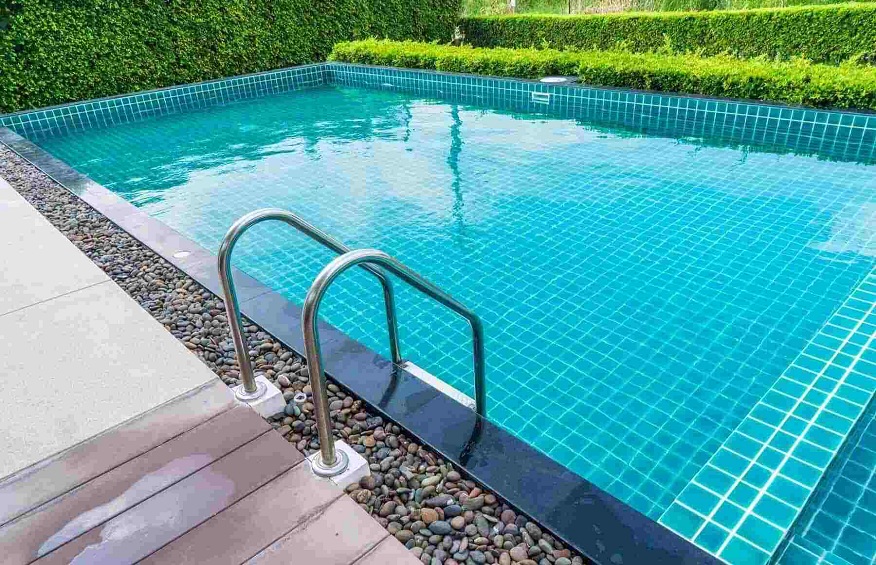Tips for Swimming Pool Maintenance in the UAE
The shimmering blue waters of a swimming pool provide welcome relief from the intense heat across the UAE. As recreational centerpieces both in backyards and community facilities, pools must undergo extensive care and cleaning to remain usable, visually appealing, and safe for human health long-term. When maintenance lags, water quality and infrastructure easily deteriorate. Use the helpful tips below to uphold swimming pool maintenance in UAE, averting risky closures.

Create a skimming and scrubbing plan.
As a pool’s first line of defense against contaminants, daily skimming ranks among the most critical maintenance practices. Leaves, dust, and errant debris settling on the water surface not only detract visually when allowed to accumulate. These materials also interact chemically over time, throwing off an ideal pH balance and harboring bacteria.
Invest in long-handled leaf nets for quick daily surface skims, removing the bulk of floating debris around perimeters before it sinks. Brush pool walls vigorously during skimming to dislodge grime buildup attempting to take hold. Establish rotating skimming and scrubbing responsibilities among grounds staff. For homeowners balancing self-care, even quick 5-minute skims make a difference in the long run.
Monitor and adjust chemical levels.
Achieving consistently balanced water chemistry remains fundamental for optimizing sanitation while preserving pool surfaces from corrosion. Pool stores provide complete residential and commercial testing kits that check alkalinity, pH, and chlorine residuals with high accuracy. Monitor chemistry at least twice weekly through the swim season.
Review your pool’s ideal chemistry profile based on volume, material types, and other fixed traits. Key targets for pH balance range from 7.4 to 7.6 in most applications. Total alkalinity measuring between 80 and 120 PPM enables easier pH regulation. Chlorine residuals ranging from 2–4 PPM kill pathogens for cleaner, safer water. If chemistry ever falls outside ideal ranges, address it immediately using a pH decreaser or increaser, a clarifier, shock treatments, and chlorine boosters as needed to reach alignment.
Keep Filtration Running Optimally
No amount of chemical treatment keeps pools truly pristine without consistent mechanical water filtration. Pumps and filter media remove suspended particulate, weighting down water quality through adhesion, clogging, and visibility issues. Inspect filtration systems regularly for load stress and reduced outflows, signaling clogged media requiring backwashing or replacement.
For the deepest contaminant capture, clean or replace filter cartridges once every 1-2 weeks mid-swim season, depending on bather loads and environmental factors. Pre-coat sand filters using recommended rechargant mixes to block pores for finer screening. Check pump motor vitals and clear any debris congesting intake grates and hampering flow. Keep all filtration components well-maintained according to manufacturers’ specifications for lower upkeep costs in the long run.
Tend to Pool Surfaces
The surfaces making up pool shells require specialized care aligned to material types to stay attractive and sound season after season. For concrete and plaster surfaces, apply weekly brush scrubbing to prevent mineral buildup and algae from taking hold while smoothing away etching. Wash vinyl liners down with bleach-free detergents to remove oily residues left behind from human contact that breed bacteria if left in place.
Inspect the surrounding tile grouting and coping stone pointing for cracks that allow water seepage to the infrastructure underneath over time. Repair all cracks with bonding compounds immediately to prevent damage cascades needing expensive overhauls down the line. Acid washing regimens performed bi-annually lift stains and restore surface shine across all pool building materials for a refreshed aesthetic. Consider sealcoating plaster yearly for an added armor layer protecting from chemical erosion.
Provide decking and drainage upkeep.
The areas surrounding pool shells endure heavy foot traffic daily and gradually sink into dinginess without due attention. Pressure wash concrete and paver deck spaces at least monthly to lift surface grime buildup and prevent slip hazards. Survey all deck expansion joints and point grout lines for proper sealing, preventing cracks where debris collects. Repair cracked tiles or pavers immediately before they intensify over time.
Ensure all perimeter deck drainage components stay clog-free and slope properly groundward, at least 1/4 inch per foot. Flush and clear main drains, fully keeping effluent flowing freely. Clogged drains force water to overflow onto surrounding surfaces, creating swampy messes and erosion alongside foundations. Keep a drainage checklist atop routine maintenance priorities.
Store chemicals safely.
No pool stays beautifully conditioned using treatment chemicals stored haphazardly, leaking fumes and residues carelessly in equipment areas. Ensure all sanitizers, algaecides, balancing agents, and cleaners remain upright in sealed, opaque containers during dormancy, as recommended. Establish ventilated chemical lockers, taking cues from public pool codes for safe, impenetrable storage kids cannot access.
Confine any chemical spills using sand dams and neutralizing agents to avoid environmental contamination. Call local authorities immediately concerning uncontrolled runoff events into community systems per hazardous waste protocols. Make safety handling and material safety data sheets available for each stored chemical onsite as a due diligence necessity. Train personnel thoroughly on how to brace spills and respond when working with volatile compounds in sensitive aquatic environments.
Maintain proper water levels.
Vigilant monitoring of pool water volume ensures circulation systems work as intended. Overfilled pools can easily overflow during bather displacement, splashing walkways. Conversely, low-volume stress pools hydraulically increase the potential for damage to surfaces and infrastructure from inadequate pressure buffers.
Mark visual fill line indicators along interior surfaces as easy water level references any staff member can utilize before adding or draining increments judiciously. Consult pump manuals to identify optimum system specifications for managing seasonal fill lines that account for both evaporation and precipitation factors over months of changing weather. Provide ample make-up water sources on standby to restore drained gallons quickly after aesthetic surface cleanings.
Involve professional assistance.
When problems escalate beyond resident expertise, seeking assistance from professional pool service companies offering maintenance contracts speeds recovery tremendously. Industry specialists possess advanced testing tools, scrubbing equipment, infrastructure know-how, and chemical handling experience that home groundskeepers simply lack, especially concerning large commercial installations.
Conclusion
Maintaining clean, chemically balanced water and sound infrastructure across swimming pools in the UAE requires commitment to core sanitation and monitoring tasks daily, along with preventative structural measures in the long run. By sticking to fundamental cleaning protocols, testing rigorously, and involving professional assistance when needed, pools stay usable and safe for family fun for decades or more. Though intensive, proper swimming pool repair in UAE stands pivotal, so cherished backyard oases beat intense climate challenges.


